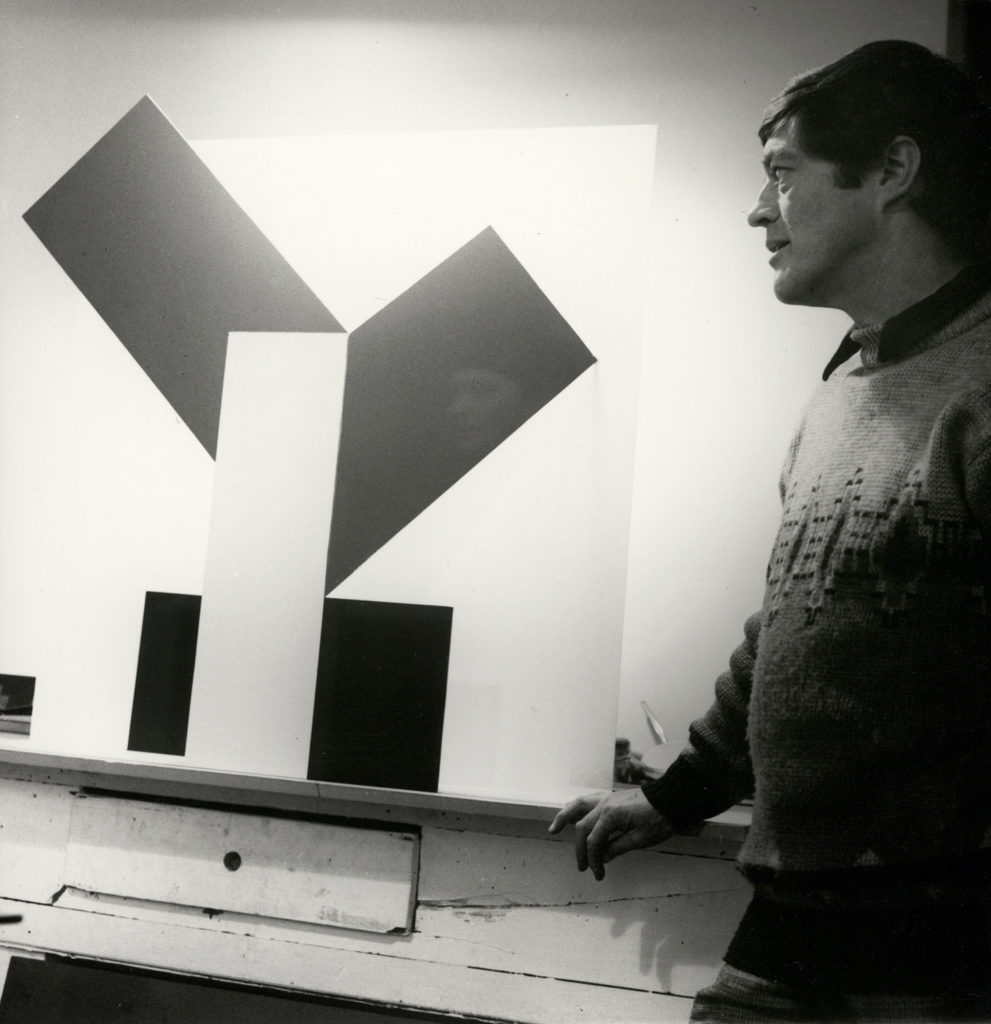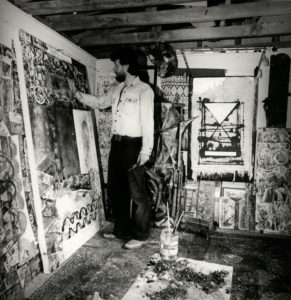ARTISTS Janet Bayly, Doreen Blumhardt, Brian Carmody, Roy Cowan, Melvin Day, John Drawbridge, Robert Franken, James Greig, Rhonnda Greig, Cary Griffiths, Terence Handscomb, Jenny Hunt, George Kojis, Tony Lane, Vivian Lynn, Jeanna Macaskill, Robert McLeod, Guy Ngan, Eve Page, Janet Paul, Juliet Peter, John Pine Snadden, Susan Skerman, Barbara Strathdee, Rob Taylor, Julia van Helden, Ans Westra IMPRINTS (dance) art direction Gordon Crook, music Colin Hemmingsen, choreography Susan Jordan Bell
On 23 September 1980, Wellington City Art Gallery opens at 65 Victoria Street. The invitations are printed by Alan Loney, on handmade paper by Kay Billings. The capital is already home to the National Art Gallery and the New Zealand Academy of Fine Arts, but this is the first time the City Council has run a gallery.
Its central location is crucial. In the catalogue, Mayor Michael Fowler writes: ‘The establishment of the Gallery in the central city is an important event; its establishment in the civic centre is even more significant. Here in the heart of the city and adjacent to the harbour, it will be complimented by the Town Hall, the foci of great cultural and conference gatherings, the various departments of the Public Library, the Planetarium, the central city parks, while all the areas around it are undergoing a massive renaissance—the rebuilding of the commercial centre of this capital city.’
Twenty-seven Wellington based artists accept Director Seddon Bennington’s invitation to exhibit new work responding to the theme of ‘opening'. He acknowledges that the Gallery's imposing a theme will not appeal to all. The show offers an introduction to the breadth of Wellington art. Works include drawing, painting, photography, collage, ceramics, soft sculpture, and artist books. Jeanne Macaskill exhibits an open filing cabinet—a ‘box of thoughts’. George Kojis and Roy Cowan supply souvenir tiles that the public can raku fire during ‘a hot opening’ on the first weekend. Cary Griffiths asks for chickens to be hatched at the Gallery. They do hatch and are counted. In his thank-you letter to Fairfield Hatchery, supplier of the eggs, Bennington writes: 'The eggs all arrived safely, and although four didn’t hatch out of the first twelve, we had eleven chickens out of the second batch. They were a great feature during the first weekend, and we found good homes for them.’
The catalogue includes portrait photos of the artists and often-candid biographies, offering an insight into an era of less-formal exhibition making. John Drawbridge writes, 'When I was thirteen years old, at Wellington College, an inspector looked over my shoulder at what I was doing and he said, “Your work is like Picasso’s”. I had no idea who he was talking about. Some years later, remembering the inspector, I knew that he had no idea who he was talking about either.’ Robert Franken says, 'One needs to be a bird to live in Wellington; to me Wellington is like an arch support in an old shoe.’
Opening-weekend activities include ‘The Great Edible Art Competition’. Open to the public, the only conditions are that the object be edible, no smaller than a chocolate fish, and no larger than two cabbages. The prize: dinner for two at Van Gogh Restaurant, Eastbourne. A children’s holiday activity involves identifying Wellington inner-city buildings from photos of their ‘openings’.
A thirty-minute dance work, Imprints, commissioned by the City Council, is performed during the official opening and throughout the four-week show. It's a collaboration between prominent Wellingtonians: composer Colin Hemmingsen (who composes the music in several jazz styles), choreographer Susan Jordan Bell, and artist Gordon Crook (who designs costumes, set, and lighting). Crook explains, 'The plot, the story line for the dance, is in fact about the problems of making definitions. The gap between what something is and our view and judgement of it.’ Hemmingsen notes, 'I’ve left spaces within the music for improvisation, both for the dancers and the musicians.’ Bell says, 'I have no wish to give any verbal explanation of Imprints other than it being a collaboration of visuals, sound, and movement, which I trust will affirm life.'
The life of City Gallery Wellington has begun.















































































